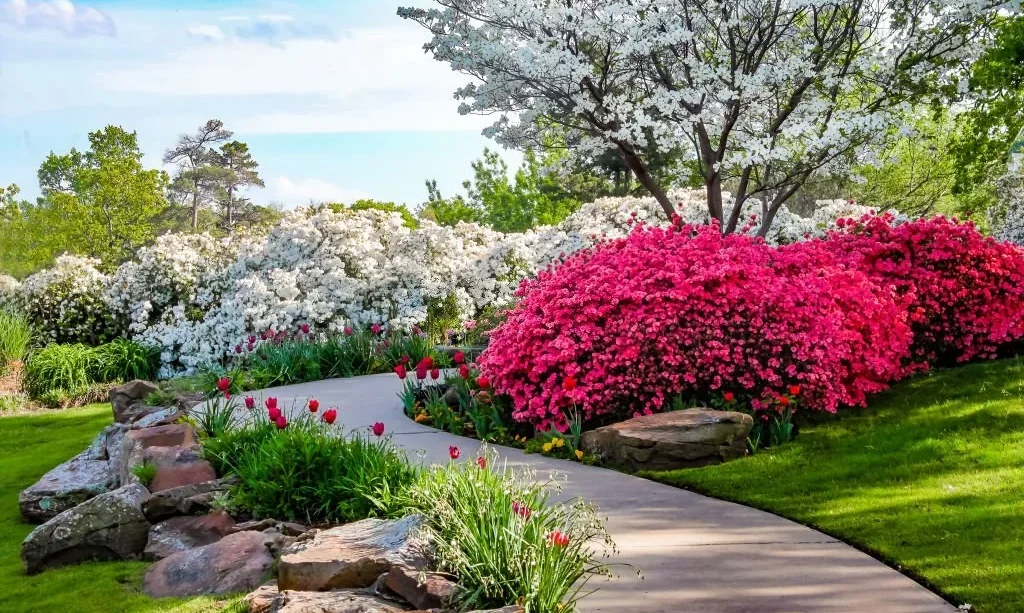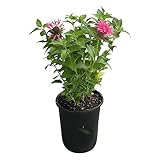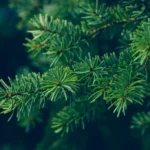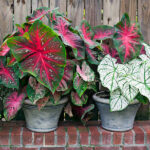Imagine strolling through a garden where vibrant bursts of color catch your eye at every turn. Azaleas, with their stunning blooms in shades of pink, purple, and white, are often the stars of such magnificent displays. But did you know that selecting the right companion plants can elevate the beauty of azaleas even further? Yes, by choosing the perfect plant partners, you can create a garden that is both visually captivating and harmonious. In this simple guide, we’ll explore the world of companion planting for azaleas and discover which plants make the perfect companions for these beloved shrubs.
- USDA Hardiness Zone: 3-8.
- Beautiful colorful plant. The leaves of Hosta is rare purple that make a wonderful supplement for your home, garden or balcony.
- Hosta are easy to grow and completely hardy. Their preferred growing conditions include shade, semi-shade, and moist, well-drained soil that does not dry out.
- Attracting Pollinators. Bees are natural pollinators of hosta plants, as are the hummingbirds that frequent the tubular flowers.
- Uses. Hosta is a great ornamental plant, perfect for decorating gardens, offices, balconies, windows, etc.
Needs of Azaleas
Before we dive into companion planting, let’s take a moment to understand the needs of azaleas. These lovely shrubs have specific requirements for optimal growth and bloom. Azaleas thrive in locations that offer filtered sunlight or partial shade, as direct sunlight can scorch their delicate leaves. They prefer well-draining acidic soil, with a pH level between 4.5 and 6.0. Additionally, azaleas appreciate consistent moisture without being waterlogged.
Companion Plants for Azaleas
Now that we have a grasp of what azaleas need, let’s explore some excellent companion plants that can complement their beauty and thrive alongside them. Here are a few categories to consider when selecting companions for azaleas:
- Shade-Loving Companion Plants: Choose plants that enjoy similar light conditions as azaleas, such as ferns, hostas, and impatiens. These shade-loving companions will create a lush and verdant understory, enhancing the overall appeal of your garden.
- Evergreen Companion Plants: Consider evergreen plants that provide year-round interest and act as a backdrop for azaleas. Boxwood, holly, and heather are excellent choices, adding structure and greenery even when azaleas aren’t in bloom.
- Seasonal Blooming Plants: Select seasonal blooming plants that coordinate their flowering time with azaleas. For example, spring bulbs like tulips and daffodils can create a stunning display alongside azaleas in early spring, while summer perennials like daylilies and astilbes can extend the blooming season.
- Ground Covers and Edging Plants: To fill empty spaces and create a neat border around azaleas, opt for ground covers and edging plants. Creeping phlox, ajuga, or dwarf mondo grass can spread gently and provide a lovely carpet of foliage that complements the azaleas.
By carefully choosing these companion plants, you can create a captivating tapestry of colors, textures, and heights that enhances the beauty of your azaleas while supporting their growth.
In the next sections, we’ll explore specific companion plants in each category, providing you with a variety of options to choose from. Get ready to transform your garden into a stunning symphony of blooms and foliage!
- USDA Prohibits Shipping Live Plants to: TN.
- Brand Name: Southern Living Plant Collection
- This petite-leafed evergreen lives up to its name, producing smooth, glossy dark-green leaves while simultaneously achieving an easily manageable size of 3 feet tall and wide.
- The Baby Gem Boxwood works tremendously well in smaller gardens due to its compact dwarf size, and is ideal in low shrub borders, formal hedges, natural hedges, container gardens, and numerous other applications.
- The slow to moderate rate of growth makes these boxwoods remarkably easy to maintain, with pruning being optional during the spring. Once established, these plants are drought, heat, and deer tolerant, making it one of the hardiest shrubs available.
Shade-Loving Companion Plants
When it comes to shade-loving companions for your azaleas, think about plants that thrive in similar light conditions. Here are a few suggestions to create a lush and enchanting understory:
- Ferns: With their delicate fronds and graceful presence, ferns make excellent companions for azaleas. Choose varieties like the Boston fern or the Japanese painted fern to add texture and a touch of elegance.
- Hostas: Known for their large, bold foliage, hostas offer a beautiful contrast to the dainty blooms of azaleas. Their varying shades of green and unique leaf shapes create a visually pleasing backdrop.
- Impatiens: These colorful annual flowers are perfect for adding splashes of vibrant hues beneath your azaleas. With shades ranging from pink and red to purple and white, impatiens bring cheerful blooms to shade-filled spaces.
- LIVE FERN PLANT: Bring home a beautiful Fern house plant that is easy to care for and thrives in any indoor or outdoor space. Ferns add instant curb appeal by placing them in hanging baskets on your patio or porch, on the edge of an bookcase or shelf
- GORGEOUS HOME DECOR: Ferns are decorative houseplants that add instant flair to your indoor or outdoor home decor with their lush, green foliage. Ready to be enjoyed and admired after unboxing for placement in any living room, patio, porch, or office
- UNIQUE GIFT IDEA: Surprise your loved ones with a live Boston Fern, ready to be gifted for any occasion, including birthday, anniversary, and housewarming. It’s a refreshing alternative to flowers or typical gifts, creating a lasting memory that shows you care
- ELEVATE MOOD & WELLBEING: Plants make us happy. They give us life, fresh air and a sense of calm – all of which have the ability to lift your mood and improve your wellbeing. NASA studies show having plants improves mood, creativity and reduces stress
- READY TO GROW: Your new live indoor plant arrives well-packed with care instructions. Keep it happy, healthy, and growing by placing it in bright, indirect sunlight and giving it 2-3 cups of water about once a week. Adjust as needed for your environment
Evergreen Companion Plants
To provide year-round interest and a backdrop for your azaleas, consider adding evergreen plants. These companions will ensure your garden remains vibrant even when azaleas aren’t in bloom:
- Boxwood: Boxwood shrubs offer a classic and formal appearance with their dense, dark green foliage. Planted strategically around your azaleas, they provide structure and act as a canvas for their colorful blooms.
- Holly: With their glossy, spiky leaves and bright red berries, hollies bring texture, color, and a touch of festive charm to your garden. Choose evergreen holly varieties to enjoy their beauty throughout the year.
- Heather: Known for their low-growing habit and abundant blooms, heather plants add a carpet of color to the ground beneath azaleas. Their flowers come in shades of pink, white, and purple, creating a picturesque scene.
- The Japanese Sky Pencil is female only cultivar of Ilex Crenata. Dense evergreen foliage that retains its natural shape without pruning making it very easy to care for. Fully mature plants reach sizes of 6-8 feet tall x 24-36 inches wide.
- MULTI USE: With its unique appearance you may find that there are several places that you may want to place your Sky Holly. They do well as container plants, tall hedges or privacy screens. In order for your plant to produce berries both male and females must be present for pollination.
- EASY TO MAINTAIN: Sky Pencil Hollies retain their elegant form without pruning, but they often benefit from light trimming while still young. Prune during the winter as the plant is not actively growing while being sure not to remove more than 1/3rd of its growth.
- USDA ZONES: Japanese Sky Pencil is hardy in zones 6 – 9. New Sky Pencil plants require frequent watering until the roots are well established. Make sure to avoid allowing the soil to become soggy as this will increase the probability of root rot.
- POTTED PLANTS: Ships as a 2.5 Quart potted plant with soil from the Alabama Gulf Coast. This plant is unavailable to ship to Hawaii and Alaska.
Seasonal Blooming Plants
To extend the blooming season and complement the vibrant colors of azaleas, consider planting seasonal blooming plants. Here are some options to add extra beauty to your garden:
- Spring Bulbs: Tulips, daffodils, and hyacinths are popular choices for early spring blooms. Their vibrant flowers burst forth alongside azaleas, creating a spectacular display of colors and fragrance.
- Summer Perennials: Daylilies, astilbes, and coneflowers are just a few examples of summer-blooming perennials that pair well with azaleas. These plants add pops of color and attract pollinators, making your garden buzz with life.
- Autumn Beauties: Consider adding fall-blooming plants like asters, sedums, or chrysanthemums to your garden. These companions will continue the floral show once the azalea blooms have faded, ensuring a beautiful transition into the cooler months.
By selecting shade-loving companions, evergreen plants, and seasonal bloomers, you can create a diverse and visually captivating garden landscape that complements your azaleas throughout the year. Get ready to witness the beauty and charm of your garden in every season!
- BEAUTIFUL COLOR: This gorgeous pink bee balm will be a beautiful addition to your garden!
- GROWTH: Bee Balm will grow to be about 2-4 feet tall, with a spread of 3-4 feet wide.
- CARE: Bee Balm grows best in full sunlight. Plant it in moist, well-draining soil and add organic matter for best results. Water every 1-2 weeks with a deep watering at the base of the plant.
- FUN FACT: Bee Balm, a member of the mint family, has been used topically to help with bee sting swelling, which is where its name comes from!
- LIVE PLANTS: Our plants are grown exclusively for Deep Roots and The Three Company, shipped fresh directly from our greenhouse to you!
Ground Covers and Edging Plants
To fill empty spaces and create a neat border around your azaleas, ground covers and edging plants can be your go-to choices. Here are some delightful options to consider:
- Creeping Phlox: With its cascading flowers in shades of pink, purple, and white, creeping phlox forms a vibrant carpet beneath your azaleas. It adds a burst of color and spreads gently, creating a picturesque ground cover.
- Ajuga: Also known as bugleweed, ajuga features dense foliage in shades of green, burgundy, or variegated patterns. Its low-growing habit and spikes of blue, pink, or white flowers make it an excellent choice for edging around azaleas.
- Dwarf Mondo Grass: This grass-like plant forms neat clumps of dark green foliage, providing a contrasting backdrop to the colorful blooms of azaleas. Its compact size and low-maintenance nature make it perfect for edging.
Considerations for Planting with Azaleas
When planting companion plants alongside your azaleas, it’s essential to keep a few considerations in mind:
- Spacing: Ensure you provide enough space between the azaleas and companion plants. Overcrowding can lead to competition for nutrients and hinder their growth. Refer to planting guidelines specific to each plant to determine the appropriate spacing.
- Watering and Mulching: Azaleas and their companions benefit from regular watering, especially during dry spells. Provide sufficient moisture to keep the soil evenly moist but not waterlogged. Apply a layer of mulch around the plants to help retain moisture and suppress weeds.
- Maintenance: Different plants have varying maintenance requirements. Consider the care needs of both azaleas and their companions to ensure you can provide adequate attention to all plants in your garden.
- Visual Harmony: Aim for a visually harmonious garden by selecting companion plants that complement the colors, textures, and heights of your azaleas. Consider how the plants will look together throughout the year, including their growth habits and bloom times.
By keeping these considerations in mind, you can create a well-planned and balanced garden landscape that showcases the beauty of your azaleas while harmoniously incorporating their companion plants.
Conclusion
Incorporating suitable companion plants with your azaleas can transform your garden into a breathtaking haven. Shade-loving plants like ferns and hostas, evergreens such as boxwood and holly, and seasonal bloomers like tulips and daylilies add layers of beauty and interest to your azalea displays. Ground covers like creeping phlox and edging plants like ajuga create a polished look, filling empty spaces and defining borders.
As you plan your garden, consider the needs of both azaleas and their companion plants, ensuring they have sufficient space, water, and care. Strive for a visually harmonious composition that allows each plant to shine while enhancing the overall appeal of your garden.
So, go ahead and experiment with different combinations, colors, and textures. Let your creativity bloom alongside your azaleas and companion plants, and enjoy the delightful symphony of nature in your own backyard!








